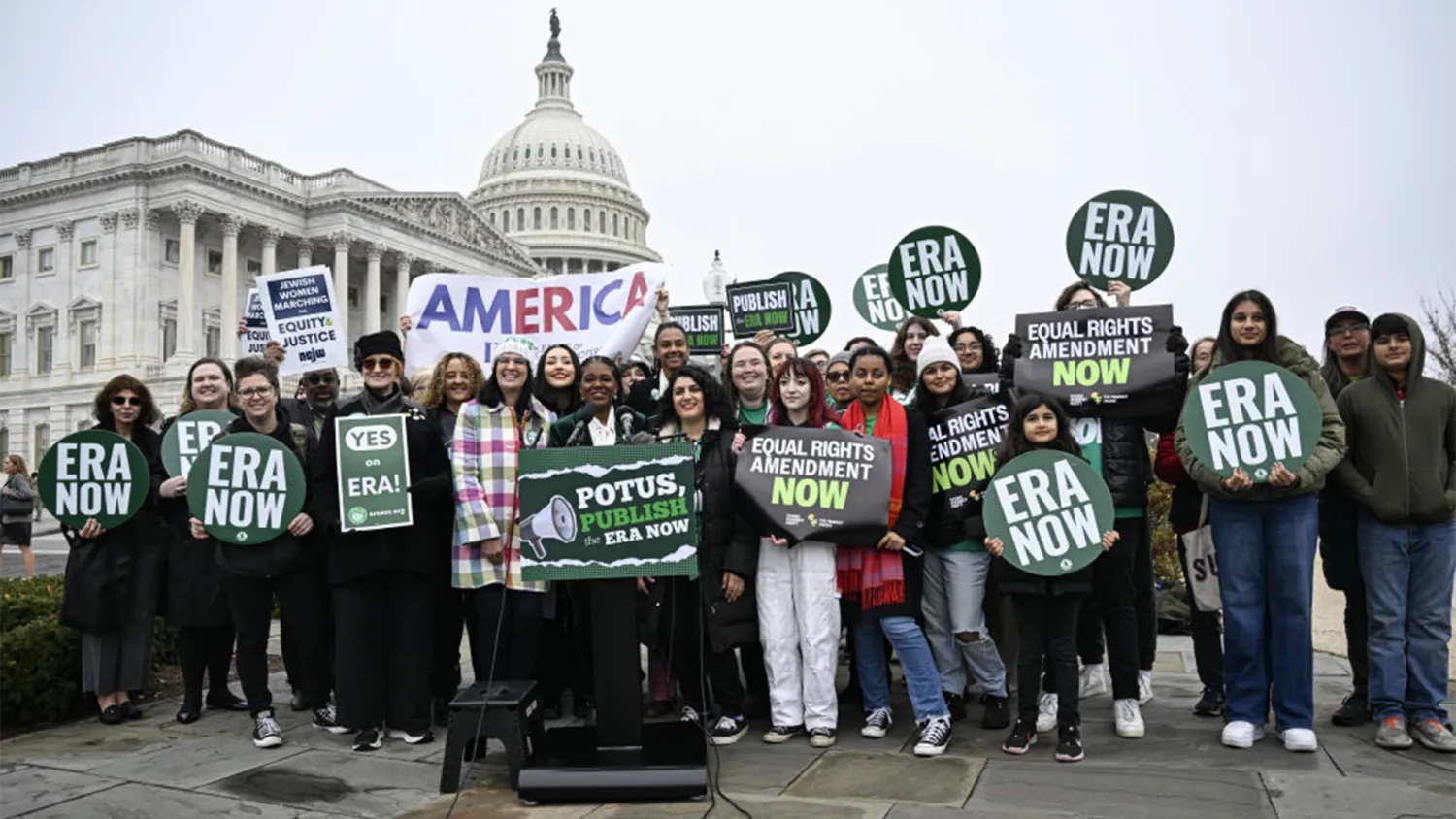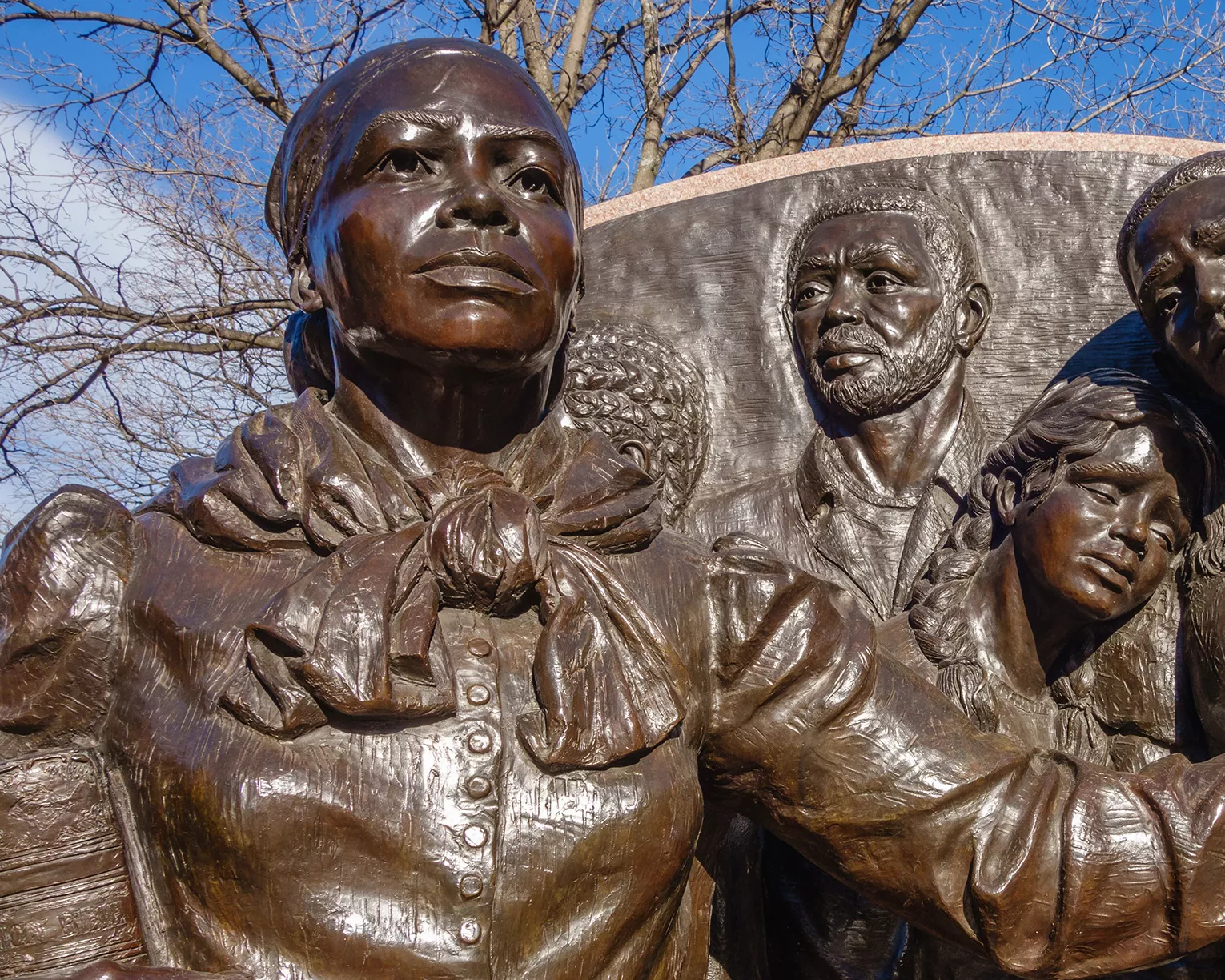NEA speaks up for the rights of students. Browse recent messages to Congressional leadership, and add your voice.
On average, women still earn just 75 cents for every dollar earned by men, with women of color and disabled women earning far less. Women are discouraged from seeking some jobs and forced out of the workplace when they become pregnant or struggle to achieve work-life balance after having a baby.
Title IX, enacted in 1972, protects Americans from sex-based discrimination in education programs or activities that receive federal financial aid. But there’s a world of difference between official policy and today’s realities.
NEA advocates for legislation to ensure gender equity in education and the workplace, and to address violence against women.
Constitutional Protection Against Sex-based Discrimination: The History of the Equal Rights Amendment

In 1923, on the 75th anniversary of the Seneca Falls Convention, Alice Paul and Crystal Eastman presented the “Lucretia Mott Amendment.” The amendment called for absolute equality, stating, “Men and women shall have equal rights throughout the United States and every place subject to its jurisdiction.” Alice Paul Institute, “The Equal Rights Amendment: A Brief History,” available at https://www.alicepaul.org/equal-rights-amendment-2/ (last accessed April 30, 2025). Go to reference In December of the same year, Senator Charles Curtis (R-KS) and Representative Daniel R. Anthony Jr. (R-KS), Susan B. Anthony’s nephew, introduced the resolution in Congress as the Equal Rights Amendment (ERA). Robin Bleiweiss, “The Equal Rights Amendment: What You Need To Know,” Center for American Progress, January 29, 2020, available at www.americanprogress.org/article/equal-rights-amendment-need-know/ Go to reference Alice Paul rewrote the proposed amendment in 1943, expanding the language to be more in line with legislation at the time. Dubbed the “Alice Paul Amendment,” the ERA was restated in the form it is now: “Equality of rights under the law shall not be denied or abridged by the United States or by any state on account of sex.” ERA Coalition, “The History of the Equal Rights Amendment,” available at https://eracoalition.org/uploads/2023/05/History-of-the-ERA-4-1.pdf (last accessed April 30, 2025). Go to reference
It was not until 1972 (50 years after the original resolution) that the ERA was actually passed by a two-thirds majority in both the House and Senate. Once the ERA passed Congress, it was sent for ratification by three-fourths of the states. Boosted by the activism of both civil rights and women’s rights activists, 22 states ratified the amendment in the first year Ibid. Go to reference of a seven-year timeline for ratification arbitrarily set by Congress. However, ratification faced pushback from an anti-ERA campaign led by Phyllis Schlafly and conservative organizations. By 1977 (two years before the ratification deadline expired), 35 of the required 38 states had ratified the amendment, and between 1973 and 1979, five states attempted to rescind their previous ratification. Robin Bleiweiss, “The Equal Rights Amendment: What You Need To Know,” Center for American Progress, January 29, 2020, available at www.americanprogress.org/article/equal-rights-amendment-need-know/ Go to reference
As the ratification timeline is not required by the Constitution nor by the text of the ERA itself, Congress introduced legislation and President Carter signed a joint resolution extending the ratification deadline to June 20, 1982.

Since 1982, the ERA has been reintroduced into every session of Congress. In 2011, on the 100th Anniversary of International Women’s Day, Representative Tammy Baldwin (D-WI-2) introduced new legislation (H.J. Res. 47) to formally remove the congressionally-imposed time limit for ratification of the ERA. Then, more recently, bolstered by the “Me Too” Movement and the re-energized support for women’s rights, interest in ratifying the ERA was revived. Led by State Senator Pat Spearman, Nevada ratified the ERA in 2017, followed by Illinois in 2018. In January of 2020, Virginia became the historic and crucial 38th state to ratify the ERA, ERA Coalition, “The History of the Equal Rights Amendment,” available at https://eracoalition.org/uploads/2023/05/History-of-the-ERA-4-1.pdf (last accessed April 30, 2025). Go to reference thereby fulfilling the requirements of Article V of the Constitution.
On January 17, 2025, President Biden declared the Equal Rights Amendment the law of the land as the 28th Amendment to the Constitution. President Biden’s recognition of the ERA was based on the opinions of constitutional experts, also confirmed by an American Bar Association report, that the constitutional requirements for ratification had been met. Although political questions remain about the recognition of the ERA, given the congressionally-imposed time limit in its preamble, the ERA’s explicit constitutional guarantee of sex equality is a crucial tool in the fight for gender equality across the gender spectrum. ERA Coalition, “The ERA Is The Law of The Land – Talking Points,” available at https://eracoalition.org/uploads/2025/02/Talking-Points-2025.pdf (last accessed April 30, 2025). Go to reference
- 1 Alice Paul Institute, “The Equal Rights Amendment: A Brief History,” available at https://www.alicepaul.org/equal-rights-amendment-2/ (last accessed April 30, 2025).
- 2 Robin Bleiweiss, “The Equal Rights Amendment: What You Need To Know,” Center for American Progress, January 29, 2020, available at www.americanprogress.org/article/equal-rights-amendment-need-know/
- 3 ERA Coalition, “The History of the Equal Rights Amendment,” available at https://eracoalition.org/uploads/2023/05/History-of-the-ERA-4-1.pdf (last accessed April 30, 2025).
- 4 Ibid.
- 5 Robin Bleiweiss, “The Equal Rights Amendment: What You Need To Know,” Center for American Progress, January 29, 2020, available at www.americanprogress.org/article/equal-rights-amendment-need-know/
- 6 ERA Coalition, “The History of the Equal Rights Amendment,” available at https://eracoalition.org/uploads/2023/05/History-of-the-ERA-4-1.pdf (last accessed April 30, 2025).
- 7 ERA Coalition, “The ERA Is The Law of The Land – Talking Points,” available at https://eracoalition.org/uploads/2025/02/Talking-Points-2025.pdf (last accessed April 30, 2025).
-
NEA Urges House to vote NO on SAVE Act
Submitted on March 31, 2025
-
NEA Urges YES vote on Reproductive Freedom for Women Act
Submitted on July 10, 2024
-
NEA Urges Senate to Ratify Equal Rights Amendment
Submitted on April 26, 2023
Bills in Congress
Learn NEA's position on pending legislation related to public education, and take action to protect our schools
-
Support
S 1332 Raise the Wage Act of 2025 www.congress.gov
Introduced on April 8, 2025
The bicameral Raise the Wage Act of 2025 would increase the federal minimum wage to $17 by 2030, benefiting all low-wage earners—including many of the education support professionals who staff our nation’s schools.
-
Support
HR 2743 Raise the Wage Act of 2025 www.congress.gov
Introduced on April 8, 2025
The bicameral Raise the Wage Act of 2025 would increase the federal minimum wage to $17 by 2030, benefiting all low-wage earners—including many of the education support professionals who staff our nation’s schools.
-
Support
HR 17 Paycheck Fairness Act www.congress.gov
Introduced on March 25, 2025
The bill would amend the Fair Labor Standards Act of 1938 to provide more effective remedies to victims of discrimination in the payment of wages on the basis of sex, and for other purposes. Without the Paycheck Fairness Act, the economic damage women experienced during the pandemic will continue to be compounded by pay discrimination—setting them back even further over the course of their careers.

Women of #RedForEd Closing the Pay Gap

Women's Leadership Training

How Unions are Closing the Gender Pay Gap Among Faculty
Are you an affiliate?



